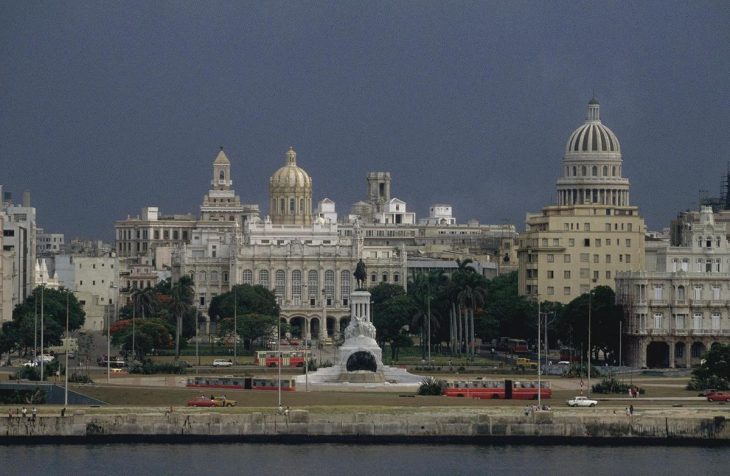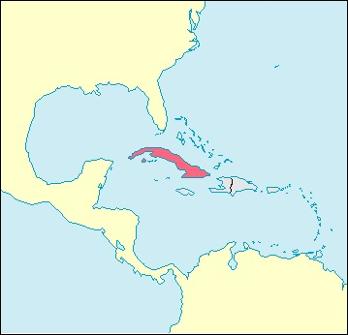What is the Capital of Cuba? Havana

Capital City of Cuba: Havana (La Habana)
City Overview
Havana (Spanish: La Habana) is the capital and largest city of Cuba. It is located on the northern coast of the island, on the Strait of Florida, which separates Cuba from the United States. The city has a rich history, being founded in 1519 by the Spanish and serving as an important port in the Spanish Empire. Over the centuries, Havana has grown into a vibrant cultural, political, and economic hub of Cuba.
With a population of over 2.1 million in the city proper and more than 2.4 million in the metropolitan area (2023), Havana is not only the largest city in Cuba but also one of the most significant cities in the Caribbean. It is a blend of colonial architecture, art deco buildings, neoclassical structures, and modernist styles, making it one of the most visually distinctive cities in the region.
Havana serves as the political, cultural, and economic center of Cuba, with all major governmental institutions, museums, theaters, and international businesses based in the city. Its historical significance, particularly its role as a major hub for trade between Spain and the Americas, has earned it recognition as a UNESCO World Heritage Site for its old town, Habana Vieja.
Area: 728.2 km²
Population: Over 2.1 million (2023)
Time Zone: Cuban Standard Time (CST), UTC -5:00 (Cuban Daylight Time, UTC -4:00)
Highest Mountain: Pico Turquino, located in the Sierra Maestra mountain range, with an elevation of 1,974 meters (6,476 feet)
Longest River: Rio Cauto, the longest river in Cuba, with a length of 343 kilometers (213 miles), flowing from the southeastern region to the Caribbean Sea.
Havana is an iconic city that blends the old with the new, and despite its struggles under economic embargoes, it remains one of the most important and dynamic cities in the Caribbean and Latin America. Its vibrant culture, historical sites, and stunning coastal scenery attract millions of visitors each year.
Major Landmarks
Havana is home to many historical, cultural, and architectural landmarks that define the character of the city. Some of the most notable landmarks include:
1. Malecón (Havana Seawall)
The Malecón is an iconic 8-kilometer long seawall stretching along the coast of Havana. It offers sweeping views of the Gulf of Mexico and serves as a popular spot for locals and tourists to walk, sit, and enjoy the ocean breeze. The area is known for its sunsets, romantic ambiance, and historic buildings along the waterfront.
2. La Habana Vieja (Old Havana)
La Habana Vieja, the historic center of Havana, is a UNESCO World Heritage Site famous for its cobblestone streets, colorful colonial-era buildings, and plazas. Key sites within the old town include Plaza de la Catedral, Plaza Vieja, and Plaza de Armas, each surrounded by beautifully preserved buildings from the Spanish colonial period.
3. El Capitolio
The El Capitolio (National Capitol Building) is one of Havana’s most recognizable landmarks. Built between 1926 and 1929, it resembles the U.S. Capitol and is the seat of the Cuban Parliament. It is also known for its impressive dome and as the site of the National Museum of Natural History.
4. Castillo del Morro (Castillo de los Tres Reyes del Morro)
Located at the entrance of Havana Bay, Castillo del Morro is a fortress built in the 16th century to protect the city from pirates and foreign invaders. The fortress offers breathtaking views of the bay and the city. It is now a museum and a symbol of Cuba’s colonial history.
5. Revolution Square (Plaza de la Revolución)
Revolution Square is the site of many historic events, including rallies and speeches by Fidel Castro. The square features the Che Guevara Memorial, with a famous portrait of Che Guevara etched into the facade of the Ministry of the Interior building. It is also home to the José Martí Memorial, dedicated to Cuba’s national hero.
6. Gran Teatro de La Habana
The Gran Teatro de La Habana is one of the most important cultural venues in Cuba. It was originally built in 1838 and has since been renovated into a modern performance space. The theater hosts the National Ballet of Cuba, opera, and symphony performances, making it a hub of Cuban cultural life.
7. Museum of the Revolution
Housed in the former Presidential Palace, the Museum of the Revolution tells the story of Cuba’s struggle for independence, the Cuban Revolution, and the rise of Fidel Castro. The museum features numerous exhibits, including historical documents, photographs, and artifacts related to the revolution.
Climate Overview
Havana has a tropical climate with distinct wet and dry seasons. The city experiences warm temperatures year-round, with relatively high humidity. The wet season, characterized by frequent rain showers and occasional hurricanes, typically runs from May to October, while the dry season spans November to April.
Monthly Climate Data
| Month | Average Temperature (°C) | Precipitation (mm) | Sunny Days (Average) |
|---|---|---|---|
| January | 21°C | 53 | 7 |
| February | 21°C | 44 | 8 |
| March | 23°C | 56 | 9 |
| April | 24°C | 63 | 10 |
| May | 26°C | 136 | 7 |
| June | 27°C | 125 | 8 |
| July | 28°C | 129 | 9 |
| August | 28°C | 137 | 8 |
| September | 27°C | 147 | 7 |
| October | 26°C | 144 | 6 |
| November | 24°C | 85 | 8 |
| December | 22°C | 56 | 8 |
Other Cities as Capital in the History of Cuba
Santiago de Cuba (1515–1607)
Santiago de Cuba served as the capital of Cuba during its early colonial period. The city was founded in 1515 and briefly became the capital when it replaced Baracoa. In 1607, the capital moved to Havana due to its more strategic location on the island.
Havana (1607–Present)
Since 1607, Havana has remained the capital of Cuba. Although the capital was briefly located elsewhere in the colonial period, it has served as the central hub of Cuban life for over 400 years. It is the heart of Cuban politics, culture, and commerce, playing a central role in the country’s history.
Country Facts
General Information about Cuba
Cuba is an island nation in the Caribbean that has a rich cultural heritage shaped by its Spanish colonial past, African influences, and revolutionary history. It is known for its music, art, literature, and beaches. The country has a single-party communist government and is one of the few remaining communist states in the world.
- Population: Approximately 11 million (2023)
- Area: 109,884 km²
- Largest City: Havana
- Currency: Cuban Peso (CUP) and Convertible Peso (CUC) (although the CUC has been phased out in recent years)
- Official Language: Spanish
- ISO Country Codes: CU (ISO 3166-1 alpha-2), CUB (ISO 3166-1 alpha-3)
- National Anthem: “La Bayamesa”
- Independence: May 20, 1902 (from the U.S. and Spain)
- Government: Communist one-party republic
Cuba has a complex and often controversial political history, especially regarding its relationship with the United States. Following the Cuban Revolution of 1959, Fidel Castro established a communist government that has influenced the country’s policies and relationships globally. The economy has traditionally been state-controlled, with tourism, tobacco, and sugar among the key industries. In recent years, there has been a gradual shift towards economic liberalization, though Cuba’s socialist system remains firmly intact.














































